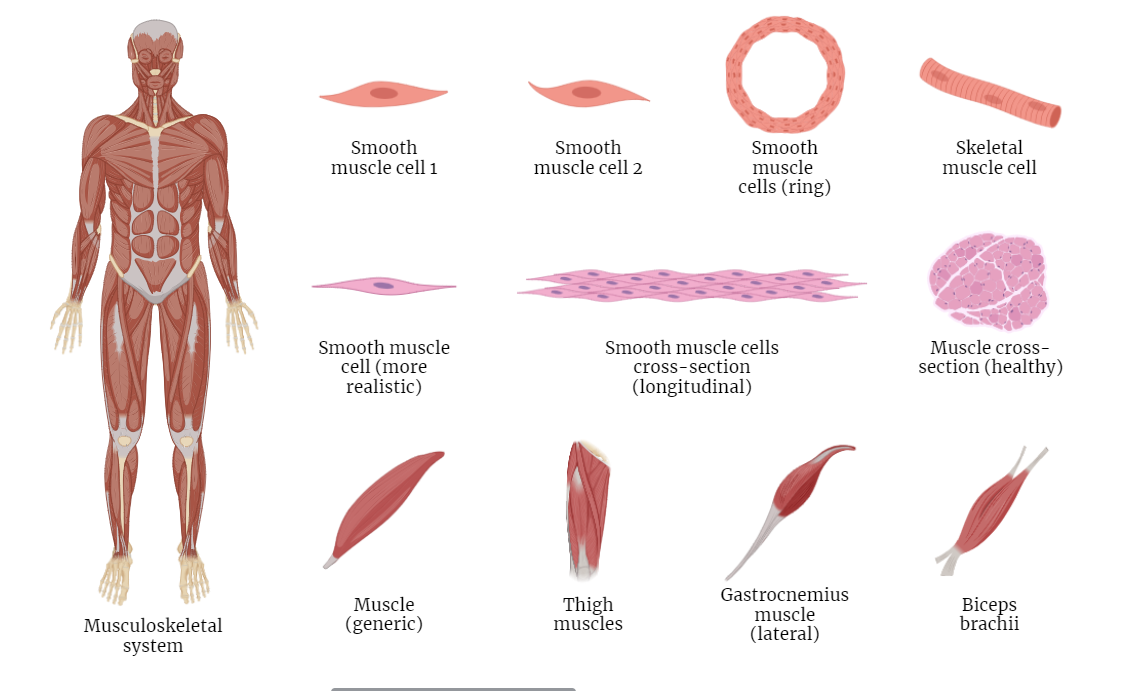-

Skeletal muscle organization
Introduction to skeletal muscle organization Gross Anatomy Muscle Fibers Myofibrils Detailed Sarcomere Structure Molecular Components of Muscle Contraction Contraction Mechanism These details provide a more comprehensive understanding of the sarcomere’s structure and the molecular components involved in muscle contraction. If you need further clarification or additional information, feel free to ask! Neuromuscular Junction Excitation-Contraction Coupling…
-
Structure of Egg
Delve into the intricate structure of mammalian eggs, from their cytoplasmic components to their nucleus, membrane, and interactions with sperm. Understand the crucial role of fertilization and egg development in the reproductive process.
-

Secondary Sex Determination in Mammals
Explore the intricate realm of secondary sex determination in mammals, where hormones and genetic interplay shape diverse phenotypes. Uncover the two major phases and hormonal cues guiding the development of sexual characteristics. From internal and external genitalia to reproductive ducts, delve into the journey of female and male phenotypes. Discover conditions like pseudohermaphroditism and true…
-

Renin-Angiotensin System (RAS)
Explore the intricate workings of the Renin-Angiotensin System (RAS), a crucial endocrine system responsible for blood pressure regulation and fluid balance. Dive into the functions of renin, angiotensin I and II, and their role in vasoconstriction and aldosterone release. Discover the clinical significance of RAS dysregulation and the use of RAS inhibitors in managing hypertension…
-

Kidney Anatomy
Dive into the intricate anatomy of the human kidney and explore its structure, including the renal cortex, renal medulla, and nephrons. Gain insights into the essential functions of the kidneys and their role in maintaining fluid balance. Understand the significance of the kidney’s blood supply and its impact on overall health.
-

Nephron – The Functional Unit of the Kidney
Explore the intricate details of the nephron, the functional unit of the kidney responsible for filtration, reabsorption, and secretion. Gain a comprehensive understanding of its structure, including the renal corpuscle and renal tubule. Discover the vital functions of the nephron in maintaining fluid and electrolyte balance, and its role in urine formation.
-

Mechanism of Urine Formation by the Kidney
Explore the intricate mechanism of urine formation by the kidney, involving filtration, reabsorption, and secretion. Discover how the kidney maintains fluid and electrolyte balance while regulating the concentration and dilution of urine. Understand the role of hormones in this vital physiological process.
-

Cilia – Structure and functions
Cilia, the hair-like projections found on various cells in the body, are intricate structures with essential functions. From facilitating fluid and particle movement to detecting chemical and mechanical signals, cilia’s roles are diverse and vital. In this chapter, we delve into their structure, types, movement mechanisms, and their crucial contributions to various physiological processes. Understanding…
-

Pathogen Recognition and Innate Immunity
The excerpt delves into the crucial topics of pathogen recognition and innate immunity. It highlights the significance of the innate immune system as the first line of defense against invading pathogens, explaining the role of pathogen recognition receptors (PRRs) in detecting unique pathogen structures known as pathogen-associated molecular patterns (PAMPs). The innate immune response’s rapid…
-

Molecular Events of Amphibian Fertilization
Fertilization in amphibians is a fascinating process that involves a unique set of molecular events governing the successful fusion of male and female gametes. Unlike mammals, amphibians employ external fertilization, where the male releases sperm into the surrounding water, and the female lays her eggs. This process requires intricate cellular interactions, starting with chemotaxis and…
-

The Golgi Apparatus: Structure and Function
The Golgi apparatus, a crucial organelle in eukaryotic cells, plays a vital role in processing, sorting, and transporting proteins and lipids. Comprising stacked cisternae with distinct regions, it employs a myriad of enzymes for modifications. This dynamic structure ensures proper cellular function by facilitating the formation of lysosomes, secretory vesicles, and the extracellular matrix. Understanding…
Categories
- Anatomy (9)
- Animal Form and Functions (38)
- Animal Physiology (65)
- Biochemistry (33)
- Biophysics (25)
- Biotechnology (52)
- Botany (42)
- Plant morphology (6)
- Plant Physiology (26)
- Cell Biology (107)
- Cell Cycle (14)
- Cell Signaling (21)
- Chemistry (9)
- Developmental Biology (36)
- Fertilization (13)
- Ecology (5)
- Embryology (17)
- Endocrinology (10)
- Environmental biology (3)
- Genetics (59)
- DNA (27)
- Inheritance (13)
- Histology (3)
- Hormone (3)
- Immunology (29)
- life science (76)
- Material science (8)
- Microbiology (18)
- Virus (8)
- Microscopy (18)
- Molecular Biology (113)
- parasitology (6)
- Physics (3)
- Physiology (11)
- Plant biology (26)
- Uncategorized (7)
- Zoology (112)
- Classification (6)
- Invertebrate (7)




